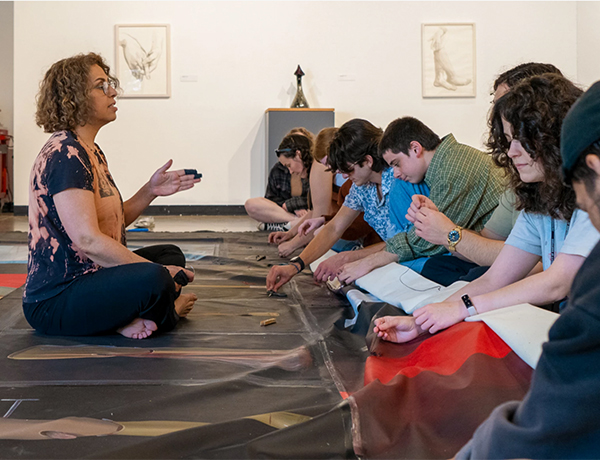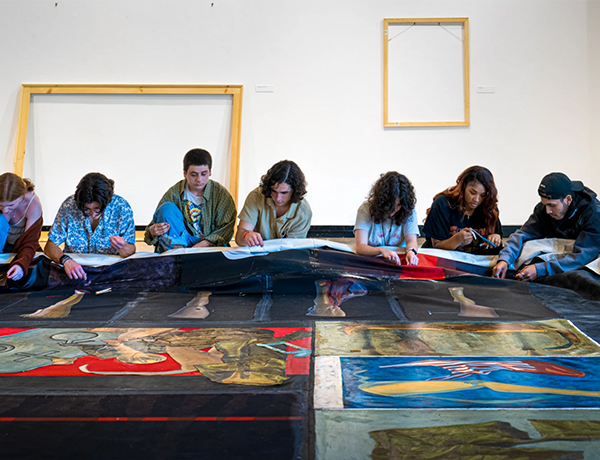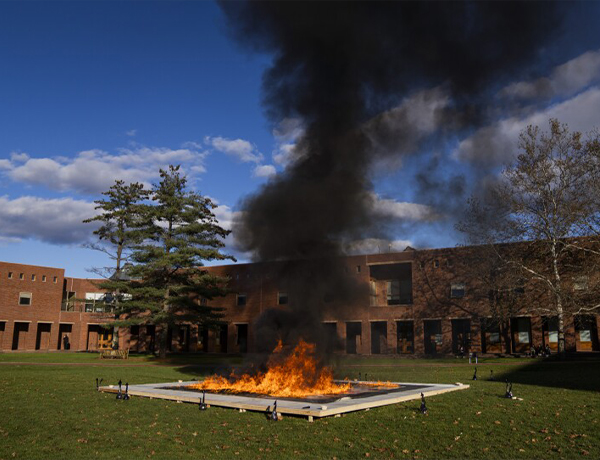

This fall, the Hartford Art School Galleries featured an array of multimedia pieces, all by Iranian artist Minoo Emami in her retrospective solo show.
The exhibit, Minoo Emami: Under My Veil, evokes themes of resistance and resilience that come together to transform the trauma of war and oppression into objects of beauty and hope. The exhibition and related programming provide an opportunity to learn about Persian aesthetics, Islamic customs, and the events in modern Iranian history that inform Emami’s work. Additionally, they offer opportunities for reflections on the state of human rights and social justice movements within a global landscape.
The exhibit in the Joseloff Gallery features sculpture, photography, printmaking, video, and installation art. The exhibition also includes new, never-before-seen work created over the past year in response to the ongoing Women’s Rights Movement in Iran.
In the first few weeks of the show, the Silpe Gallery featured additional video pieces, and the space was also used for a collaborative art-making activity. Members of the public and the University community (including various Hartford Art School students and faculty) were invited to participate in stitching together Emami’s early “antiwar” paintings to create a massive quilt. Both the Hartford Courant and CT Public witnessed the collaboration between the community and the artist.
CT Public captured a student perspective on the process, which culminated in sacrificial burning event. “The sewing really felt like such an act of care, because of the intention behind it, how careful the process was,” said University of Hartford student Alison Bakke, who helped Emami stitch the quilt. “So, even though the paintings will be destroyed, it's almost like this ultimate act of grief in destroying them. It's an act of love, by letting them go and letting them transform into something else.”
Alison Bakke: University of Hartford student, Photo Credit: Michael VahrenwaldThe sewing really felt like such an act of care, because of the intention behind it, how careful the process was. So even though the paintings will be destroyed, it's almost like this ultimate act of grief in destroying them. It's an act of love, by letting them go and letting them transform into something else.

The quilt-making project’s pinnacle event was performance by the artist and a sacrificial burning of the quilt. The performance art piece, 'Body Quilt: A Fire for Peace' drew from themes of the Emami’s exhibit, and was held on November 11 on the UHart campus.
The “Body Quilt” event was also documented by CT Public in a second story, who also an opportunity to interview the artist. Emami summed up the art burning simply as a “ritual rooted in mourning” and acknowledged she herself is mourning for all who have been hurt with war and violence around the world.
During the 30-minute performance, Emami was joined by women from a variety of backgrounds as she carries out mourning rituals based on Kurdish traditions. In the final act, her large quilt of paintings was covered in "tears" poured from traditional tear-catching vessels before it was set on fire. As it was also held on Veteran's Day, visitors were encouraged to leave messages of support for those impacted by war.